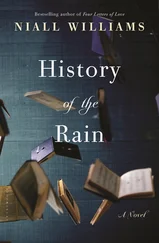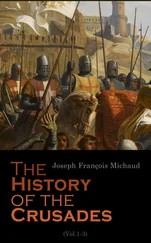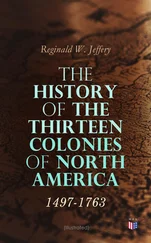In addition to the burning of the Negro Will, on the 4th of July, was the sensation created by his accusing two white soldiers, Kane and Kelly, with complicity in the conspiracy. Kane was examined the next day: said that he had never been to the house of John Romme; acknowledged that he had received a stolen silver spoon, given to his wife, and sold it to one Van Dype, a silversmith; that he never knew John Ury, etc. Knowing Mary Burton was brought forward—as she always was when the trials began to lag—and accused Kane. He earnestly denied the accusation at first, but finally confessed that he was at Hughson's in reference to the plot on two several occasions, but was induced to go there "by Corker, Coffin, and Fagan." After his tongue got limbered up, and his memory refreshed, he criminated Ury. He implicated Hughson's father and three brothers, Hughson's mother-in-law, an old fortune-teller, as being parties to the plot as sworn "to burn, and kill;" that Ury christened some of the Negroes, and even had the temerity to attempt to proselyte him, Kane; that Ury asked him if he could read Latin, could he read English; to both questions he answered no; that the man Coffin read to him, and descanted upon the benefits of being a Roman Catholic; that they could forgive sins, and save him from hell; and that if he had not gone away from their company they might have seduced him to be a Catholic; that one Conolly, on Governor's Island, admitted that he was "bred up a priest;" that one Holt, a dancing-master, also knew of the plot; and then described the mystic ceremony of swearing the plotters. He said, "There was a black ring made on the floor, about a foot and a half in diameter; and Hughson bid every one put off the left shoe and put their toes within the ring; and Mrs. Hughson held a bowl of punch over their heads, as the Negroes stood around the circle, and Hughson pronounced the oath above mentioned, (something like a freemason's oath and penalties,) and every negro severally repeated the oath after him, and then Hughson's wife fed them with a draught out of the bowl."
This was "new matter," so to speak, and doubtless broke the monotony of the daily recitals to which their honors had been listening all summer. Kane was about to deprive Mary Burton of her honors; and, as he could not write, he made his mark. A peddler named Coffin was arrested and examined. He denied all knowledge of the plot, never saw Hughson, never was at his place, saw him for the first time when he was executed; had never seen Kane but once, and then at Eleanor Waller's, where they drank beer together. But the court committed him. Kane and Mary Burton accused Edward Murphy. Kane charged David Johnson, a hatter, as one of the conspirators; while Mary Burton accuses Andrew Ryase, "little Holt," the dancing-master, John Earl, and seventeen soldiers—all of whom were cast into prison.
On the 16th of July nine Negroes were arraigned: four plead guilty, two were sentenced to be burnt, and the others to be hanged. On the next day seven Negroes plead guilty. One John Schultz came forward, and made a deposition that perhaps had some little influence on the court and the community at large. He swore that a Negro man slave, named Cambridge, belonging to Christopher Codwise, Esq., did on the 9th of June, 1741, confess to the deponent, in the presence of Codwise and Richard Baker, that the confession he had made before Messrs. Lodge and Nichols was entirely false; viz., that he had confessed himself guilty of participating in the conspiracy; had accused a Negro named Cajoe through fear; that he had heard some Negroes talking together in the jail, and saying that if they did not confess they would be hanged; that what he said about Horsefield Cæsar was a lie; that he had never known in what section of the town Hughson lived, nor did he remember ever hearing his name, until it had become the town talk that Hughson was concerned in a plot to burn the town and murder the inhabitants.
This did not in the least abate the zeal of Mary Burton and William Kane. They went on in their work of accusing white people and Negroes, receiving the approving smiles of the magistrates. Mary Burton says that John Earl, who lived in Broadway, used to come to Hughson's with ten soldiers at a time; that these white men were to command the Negro companies; that John Ury used to be present; and that a man near the Mayor's Market, who kept a shop where she (Mary Burton) got rum from, a doctor, by nationality a Scotchman, who lived by the Slip, and another dancing-master, named Corry, used to meet with the conspirators at Hughson's tavern.
On the 14th of July, John Ury was examined, and denied ever having been at Hughson's, or knowing any thing about the conspiracy; said he never saw any of the Hughsons, nor did he know Peggy Carey. But William Kane, the soldier, insisted that Ury did visit the house of Hughson. Ury was again committed. On the next day eight persons were tried and convicted upon the evidence of Kane and Mary Burton. The jail was filling up again, and the benevolent magistrates pardoned fourteen Negroes. Then they turned their judicial minds to the case of William Kane vs . John Ury. First, he was charged with having counselled, procured, and incited a Negro slave, Quack, to burn the king's house in the fort: to which he pleaded not guilty. Second, that being a priest, made by the authority of the pretended See of Rome, he had come into the Province and city of New York after the time limited by law against Jesuits and Popish priests, passed in the eleventh year of William III., and had remained for the space of seven months; that he had announced himself to be an ecclesiastical person, made and ordained by the authority of the See of Rome; and that he had appeared so to be by celebrating masses and granting absolution, etc. To these charges Ury pleaded not guilty, and requested a copy of the indictments, but was only allowed a copy of the second; and pen, ink, and paper grudgingly granted him. His private journal was seized, and a portion of its contents used as evidence against him. The following was furnished to the grand jury:—
"Arrived at Philadelphia the 17th of February, 1738. At Ludinum, 5th March.—To Philadelphia, 29th April.—Began school at Burlington, 18th June. Omilta Jacobus Atherthwaite, 27th July.—Came to school at Burlington, 23d January, 1740.—Saw——, 7th May.—At five went to Burlington, to Piercy, the madman.—Went to Philadelphia, 19th May.—Went to Burlington, 18th June.—At six in the evening to Penefack, to Joseph Ashton.—Began school at Dublin under Charles Hastie, at eight pounds a year, 31st July—— , 15th October—— , 27th ditto.—Came to John Croker (at the Fighting Cocks), New York, 2d November.—I boarded gratis with him, 7th November—Natura Johannis Pool, 26th December.—I began to teach with John Campbell, 6th April, 1741.—Baptized Timothy Ryan, born 18th April, 1740, son of John Ryan and Mary Ryan, 18th May.—Pater Confessor Butler, two Anni, no sacramentum non confessio." 250
On the 21st of July, Sarah Hughson, who had been respited, was put on the witness-stand again. There were some legal errors in the indictments against Ury, and his trial was postponed until the next term; but he was arraigned on a new indictment. The energies of the jury and judges received new life. Here was a man who was a Catholic—or had been a Catholic—and the spirit of religious intolerance asserted itself. Sarah Hughson remembered having seen Ury at her father's house on several occasions; had seen him make a ring with chalk on the floor, make all the Negroes stand around it, while he himself would stand in the middle, with a cross, and swear the Negroes. This was also "new matter:" nothing of this kind was mentioned in the first confession. But this was not all. She had seen Ury preach to the Negroes, forgive their sins, and baptize some of them! She said that Ury wanted her to confess to him, and that Peggy confessed to him in French.
Читать дальше












